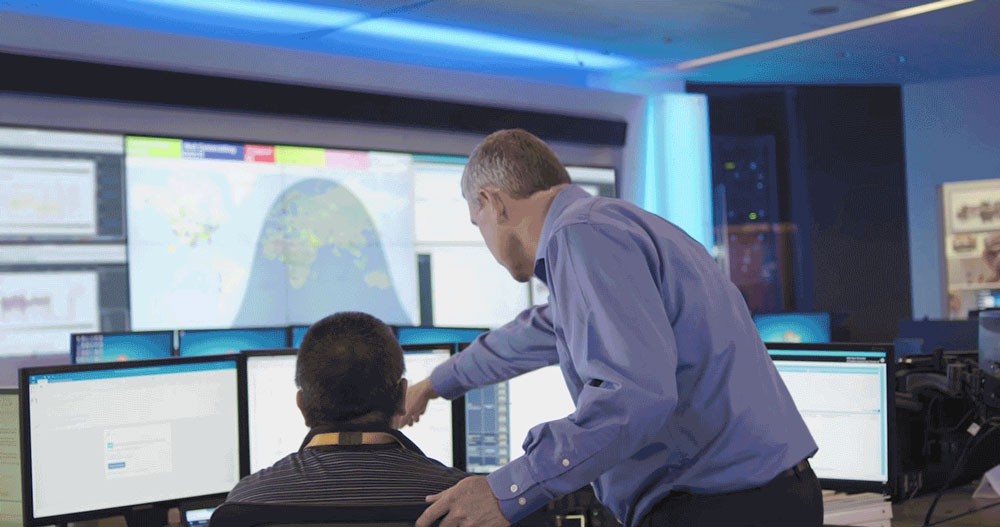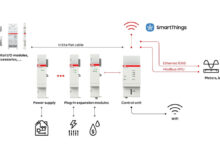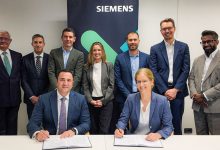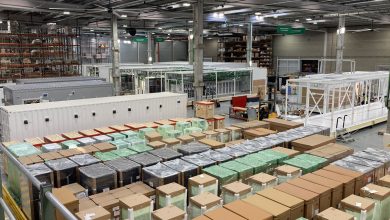GE’s new digital center
Using data from power plants to spot trouble and save money
Justin Eggart and fellow engineers working inside GE Power’s Monitoring and Diagnostics Center in Atlanta were halfway through their shift a few months ago when they noticed something strange. The center, the largest of its kind in the world, looks a lot like a smaller version of NASA’s mission control center. It has banks of computers and a wall-to-wall, colorful LED screen flashing real-time operating conditions inside 5,000 turbines, generators and other equipment churning away at more than 950 power plants located in 75 countries and serving 350 million people.
Every day, 1 million sensors attached to the machines send 200 billion data points to the cloud and to computers sitting directly on the machines. Eggart and his team slice it and dice the data with sophisticated software and ‘digital twins’ — virtual versions of the power plans — and look for anomalies. “Our algorithms can run analysis on data that to other people appears as noise,” he says. “Within that noise, we can start to see patterns that allow us to make predictions.”
That afternoon, one of the power stations tracked by the center signaled an alert, even though it seemed to operate normally. “The plant never felt it, never heard it, never saw anything,” says Eggart, the General Manager for fleet management technology at GE’s Power Services unit. “But we were sure it was there.”
The GE engineers in Atlanta called the power plant operators, who remained incredulous because they didn’t see any issues on their end, and told them to take a close look at a turbine bearing during the next scheduled maintenance session coming in a few weeks. “They came back and said: ‘You know what, you were right,’” Eggart says. “The bearing wasn’t getting the right lube oil feed, and it was going to fail.”
Spotting a problem early can save a utility a lot of money. Power plants get fined USD 50,000 if they ‘trip’ and abruptly disconnect from the grid in some cases. This expense is in addition to the money they’re not making while the plant is offline. The costs can spiral into millions of dollars in cases like the bum bearing, especially if operators have to dock their plants for days or weeks because they don’t have spares on hand.
The technology Eggart’s team is using is already smart enough to spot hundreds of similar problems every year. But as of late 2017, it has a new brain running on Predix, the software platform GE Digital developed for the industrial internet. The brain is GE’s new Asset Performance Management (APM) software application, and it will make the center’s predictive powers even more formidable, by giving customers more advance warning of issues that might trigger an outage. The ‘brain’ also makes it easier for GE engineers and their customers to compare notes in real time and spot problems before they happen. Customers with the software see exactly what GE’s experts see. As a result, they minimize downtime and optimize power plant performance and save utilities money. “In the past, we had to call plant operators or send them an email,” Eggart says. “Now, they can see the same data I see. It allows us to interact on our smartphones, tablets and PCs and be much more collaborative.”
GE started remotely monitoring power plants two decades ago and has amassed a treasure trove of unique operations data. Machines made by the company also generate a third of the world’s electricity, giving it detailed insights into how turbines and generators are built and work. This domain knowledge allows the team at the center to also monitor turbines made by Alstom, Mitsubishi, Siemens and other makers. “We believe we have more data than anybody, and we’ve seen more than anyone,” Eggart says. “We also designed a lot of the equipment and know where to look. We can tailor our algorithms right around that knowledge.”
The most powerful Predix algorithms live inside the cloud. Using information about vibrations, pressure, temperature and other factors, the software, in combination with the specific machine’s digital twin, can predict what might happen in the future and recommend the best time for maintenance or the most optimal ways to run the plant.
But another set of algorithms and digital twins lives in computers located directly on the machines in the power plant, or, as GE calls it, on the edge. “The edge tends to be focused on the here and now, and the cloud allows me to think forward,” Eggart says. “The edge is like me putting a finger on the machine and feeling the vibrations and heat right there. The cloud is the brain that helps me figure out what it all means and what I need to do.”
Still, it’s humans who ultimately divine meaning from the data and decide how to respond to it. “You’ve got your edge and your cloud running your predictive software,” Eggart says. “But they inform the people who provide the service. The relationship is collaborative, not competitive. The AI is not taking over.”
Predix can operate in large cloud environments like Microsoft Azure and Amazon Web Services. Eggart says that this “makes it easy” to grow the system to whatever size he needs. “I can scale at the push of a button,” he says.
This is handy for solutions like the APM software, which can, say, monitor a gas turbine and run diagnostics, but also optimize maintenance strategy, manage safety and environmental compliance, handle reliability, among many other functions. “All of these pieces of software build upon each other,” Eggart says. “Customers can buy a license and choose whatever level of engagement they want to have.”
Right now, the M&D Center, as GE calls it, covers only thermal power plants and battery energy storage systems. GE also has monitoring centers for renewable energy in places like New York, as well as globally. But in the future, a similar center could cover “the entire energy value network,” Eggart says. “There’s no reason why we cannot monitor transformers, inverters, power lines and other technology standing between the power plant and the consumer,” he says. “When it comes to Predix and the cloud, the sky is the limit.”
Story by Tomas Kellner, Author at GE Reports







